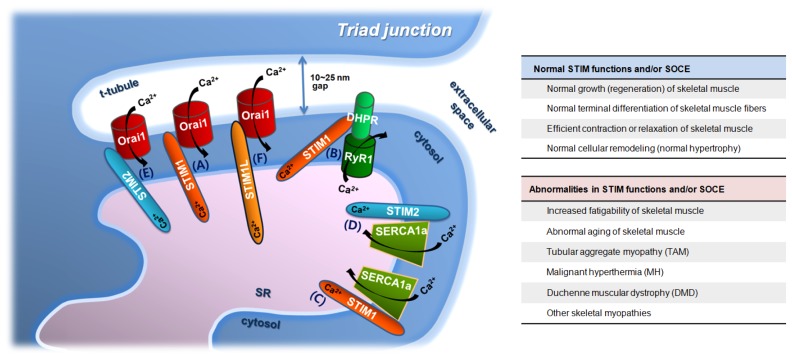Fig. 1.
Ca2+ movements involving STIMs and/or skeletal SOCE in skeletal muscle, and proteins that either regulate or are otherwise related to the Ca2+ movements. A triad junction with proteins that either regulate or are related to STIMs and skeletal SOCE is depicted, and the involvement of STIM proteins in the Ca2+ movements of skeletal muscle fibers is presented (A to F). DHPR, dihydropyridine receptors; RyR1, ryanodine receptor 1; STIM1, stromal interaction molecule 1; STIM2, stromal interaction molecule 2; STIM1L, a long form of STIM1; SERCA1a, sarcoplasmic/endoplasmic reticulum Ca2+-ATPase 1a; SR, sarcoplasmic reticulum; and, t-tubule, transverse-tubule. The direction of Ca2+ movements via the proteins is presented by black arrows. STIMs and/or skeletal SOCE participate in various skeletal muscle functions, ranging from short to long and from physiological to pathophysiological phenomena (summarized in the right-hand panel). Proteins that contribute to the formation and maintenance of the triad junction (JP1, JP2, or MG29) are not depicted, despite their significance.

